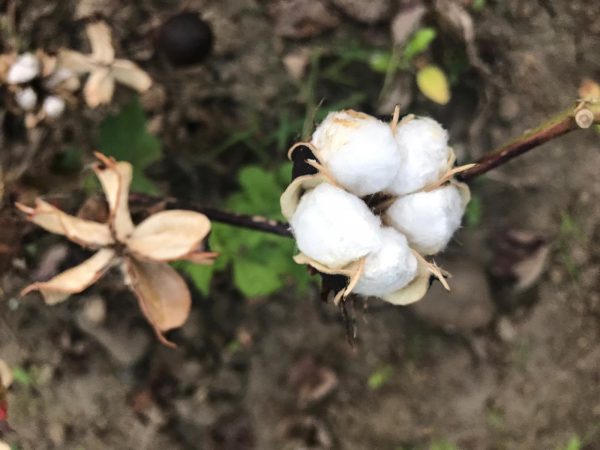Ralph Lauren Corporate Foundation and Soil Health Institute launch new U.S. regenerative cotton program

Published: December 7, 2021
Category: Regenerative Agriculture
The U.S. Regenerative Cotton Fund aims to assist farmers in implementing regenerative agricultural practices across more than one million acres of U.S. cotton cropland; the goal is to draw down one million metric tons of carbon dioxide equivalent from the atmosphere by 2026
The Ralph Lauren Corporate Foundation and the Soil Health Institute recently announced a founding grant to launch the Institute’s U.S. Regenerative Cotton Fund (USRCF), a unique, farmer-facing, science-based initiative that will support long-term, sustainable cotton production in the United States, with the goal of eliminating one million metric tons of carbon dioxide equivalent (CO2e) from the atmosphere by 2026.
Significant opportunity exists for expanding adoption of climate-friendly soil health practices in cotton production. Based on data from the U.S. Department of Agriculture (USDA) Census of Agriculture, only eight percent of cotton cropland is managed using cover cropping and 21 percent is managed using no tillage. The USRCF will empower cotton farmers to adopt regenerative practices, like cover cropping and no till, in a way that benefits their operation. Regenerative agricultural practices can address issues important to both consumers and the environment, such as climate change, water quality, and pollinator habitat. The program will also help to ensure farmers can generate long-term value for their operations including increased profitability.
“After a heavy, 1-3 inch rainfall, that’s where cover crops really shine,” said Burton Heatwole, who grows cotton, corn, and other crops on his family’s 1500-acre farm near Millen, GA. “We have no runoff, no wash-outs, and the water in our ditches and ponds is clean. One thing I wish all farmers knew is how a cover crop can help them take advantage of all the sunshine, rain, and growing that can take place from September through November to improve soil health.”
The USRCF is supported by a five-million-dollar grant from the Ralph Lauren Corporate Foundation. Currently, cotton makes up more than 80 percent of Ralph Lauren Corporation’s total material use.
The USRCF will initially operate in four states—Arkansas, Texas, Mississippi and Georgia—and will look to expand into Alabama, North Carolina, Missouri, California, and Oklahoma as these nine states represent 85 percent of U.S. cotton production. The Soil Health Institute will work closely with cotton farmers to help them measure and monitor the environmental, societal, and economic benefits of soil health management systems on their operations. Through the USRCF, improvements in soil health and carbon sequestration will be measured through an approach developed by the Soil Health Institute called soil health and soil carbon targets. The USRCF will also engage with Historically Black Colleges and Universities (HBCUs), specifically those with agricultural programs, to develop increased access to career paths in decision-making positions in U.S. agriculture and establish mentoring programs to help prepare the next generation of scientists and leaders in agriculture.
To learn more about the U.S. Regenerative Cotton Fund visit: https://soilhealthinstitute.org/usrcf/
Organic & Non-GMO Insights December 2021








